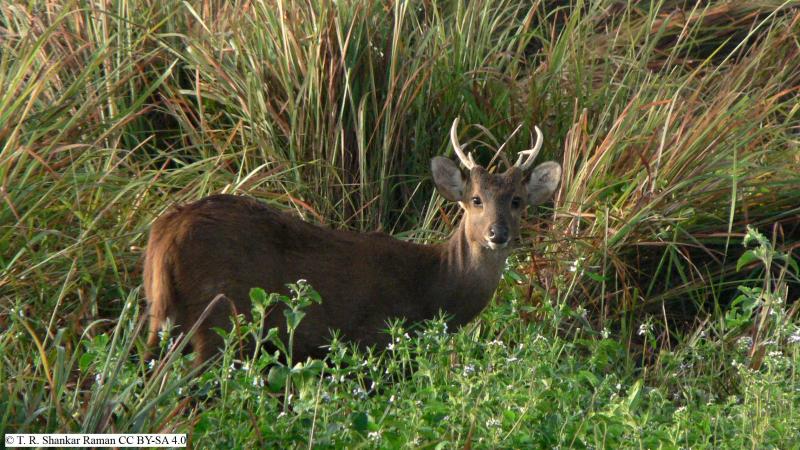
As soon as we enter a zoo or a forested area, the most common animal we encounter is a deer or its close relative, giving us an impression that deer populations are plentiful in the world. However, with increasing deforestation and poaching, they are declining too. The Indian hog deer is one endangered species protected under the Indian Wildlife (Protection) Act, 1972. These small deer, scientifically named Axis porcinus, are found in many parts of Asia. In a recent study, researchers from the Wildlife Institute of India, Dehradun, have discovered a new subspecies of hog deer in Northeast India, which was earlier thought to have been found only in southeast Asia.
There are two previously known subspecies of hog deer. Axis porcinus porcinus, or the ‘western race’, is found in parts of Pakistan and along the Terai grasslands along the Himalayan foothills stretching up to Nepal and Myanmar. The other subspecies, A. p. annamiticus, or the ‘eastern race’, is found in parts of Thailand, Indo-China, Laos, Cambodia, and Vietnam. As the eastern race has a bleak distribution, its range in India is not well-known.
In the current study, the researchers report the discovery of the eastern race subspecies, A. p. annamiticus, from the Keibul Lamjao National Park (KLNP) in Manipur. The study was published in the journal Scientific Reports and was funded by the Department of Science and Technology, Wildlife Institute of India and the Ministry of Environment, Forest and Climate Change. This discovery shows that the western range of the hog deer, belonging to the eastern race, stretches until Manipur and not central Thailand as previously thought.
The researchers collected shedded antlers, faeces and dead remains of hog deer samples from different locations in India, including Uttarakhand, Punjab, Uttar Pradesh, Assam and Manipur. They then isolated the DNA from these samples and analysed the genome. Based on the genetic data, the researchers divided the populations of hog deer into two groups; those samples collected from Manipur belonged to the first group while the rest formed the other group. By comparing the genetic features between the two, the researchers concluded that the small population from Manipur is A. p. annamiticus, the eastern hog deer.
The findings of the study show that the small hog deer population in Manipur, of about a hundred individuals, has a low genetic diversity and is prone to extinction.
“The eastern hog deer of Manipur requires a dedicated management intervention for the maintenance of this subspecies”, says Dr S.K. Gupta, Scientist at WII and lead author of the study, who cautions that unless there is a timely intervention, the population could be wiped out owing to destruction of its habitat.
The researchers also believe that the eastern subspecies, which has already lost its habitat in other countries, needs to be conserved for its evolutionary and ecological significance.
“We need to establish a captive breeding centre for hog deer population in India where selected (genetically distant individuals) adult hog deer can be used for producing genetically diverse offspring”, remarks Dr Gupta, discussing on how we could conserve these newfound deer in India.





